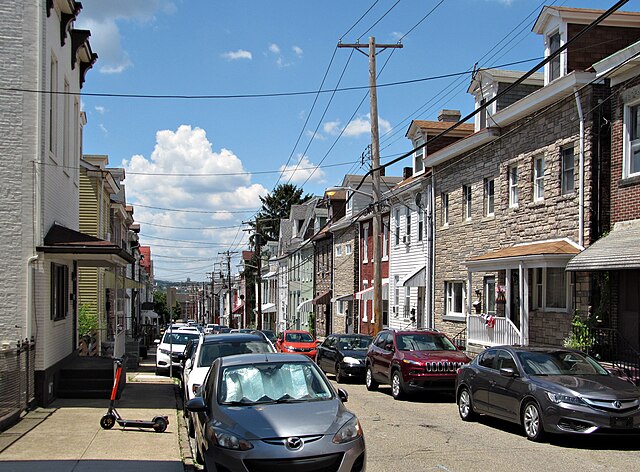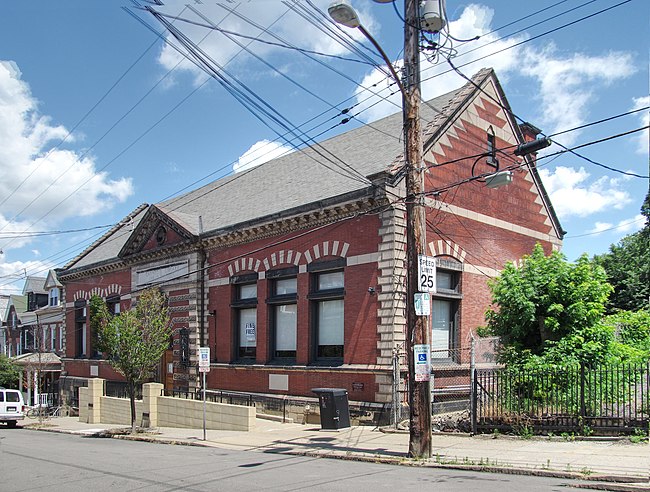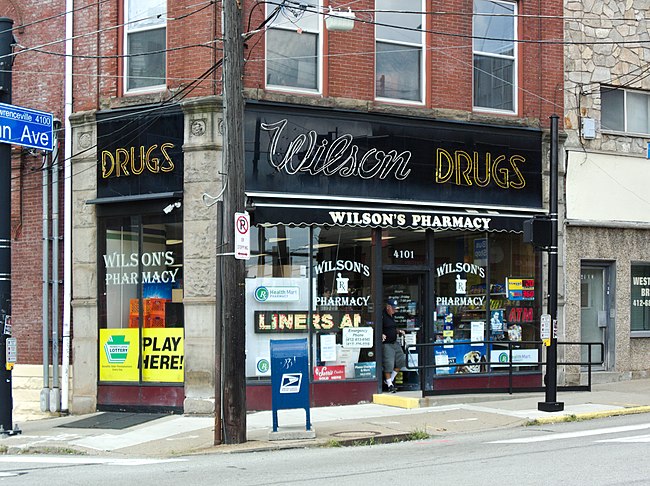
There is something about men’s clubs: when they take over a building, the first thing they do is block out as much of the natural light as possible. But the outlines of the old windows are clear enough: it is not hard to imagine this building the way it was when it was a Swedish church.
This is a late example of the style of modest church more typical of the middle 1800s. It has all the elements—the shallow-pitched roof, the walls divided into sections by simple pilasters, the date stone in the gable, the crenellations. We also note that typical nineteenth-century Pittsburgh adaptation to a tiny lot: the sanctuary is on the second floor, with social hall and schoolrooms or offices on the ground floor.

Without the date stone, old Pa Pitt would have guessed that this church was twenty years or more earlier.

The Amvets seem to have moved out, and it looks as if the building is vacant now. Considering the mushrooming value of Lawrenceville real estate, it will probably be filled or demolished soon.

















